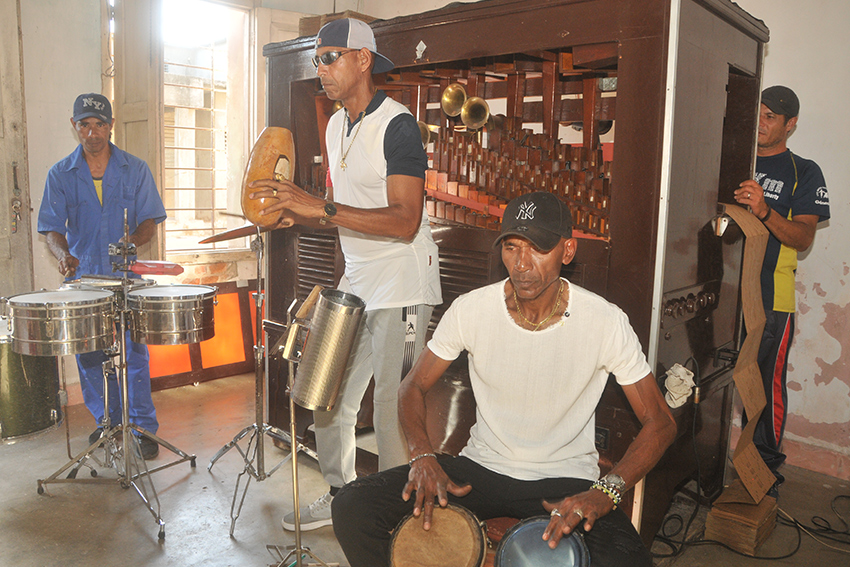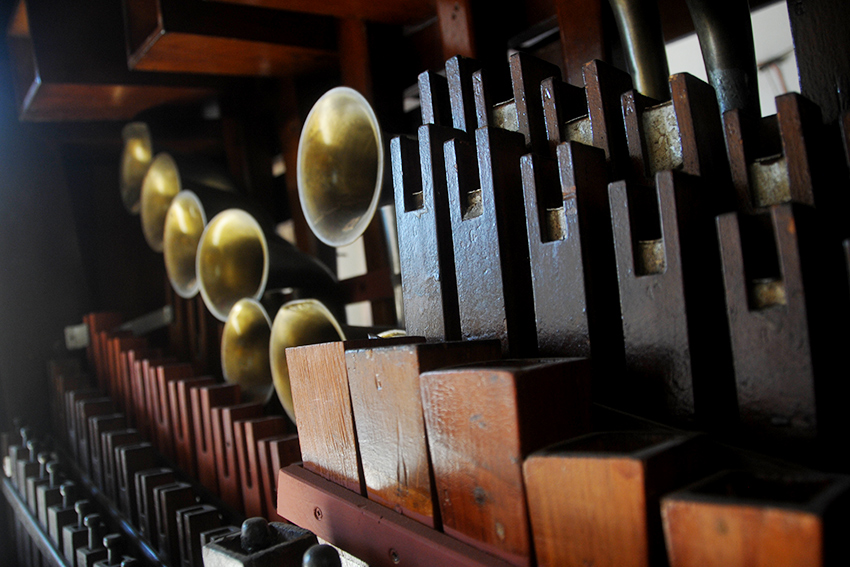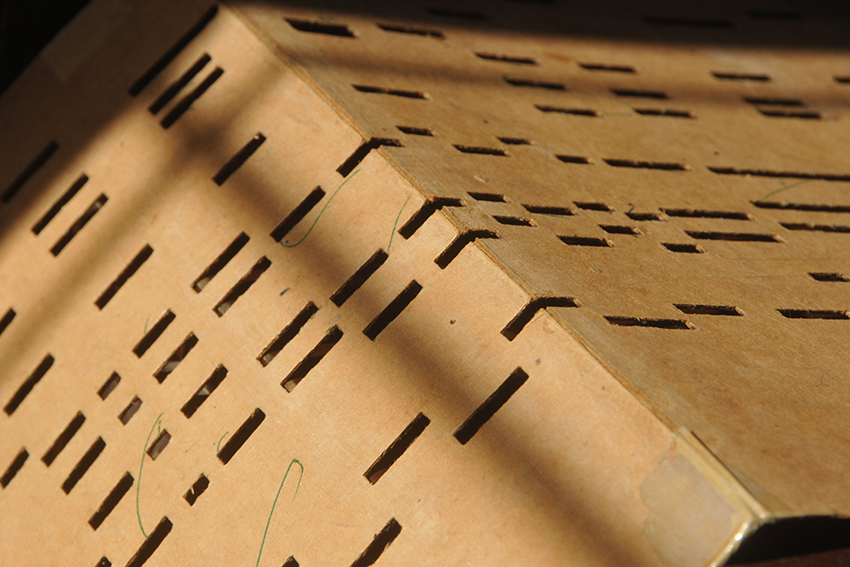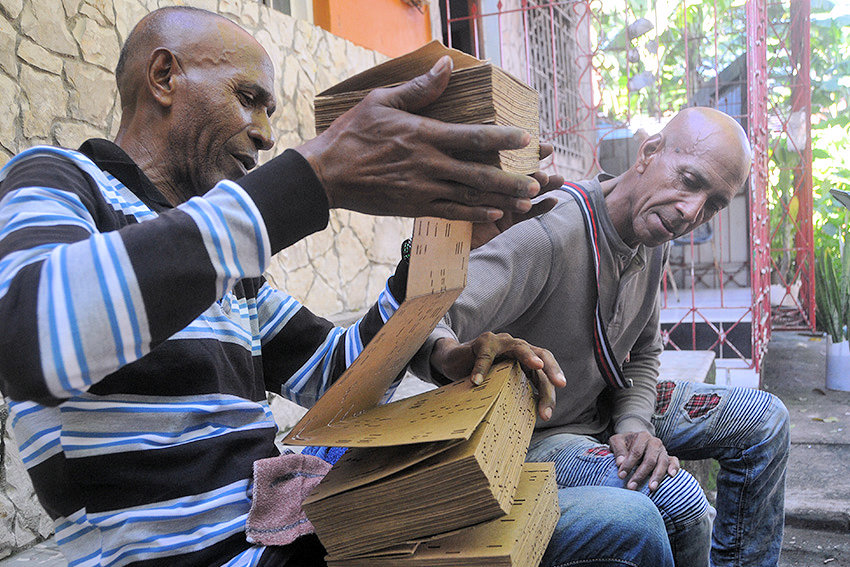
The Organ belonging to the Ochoa family, weighing around one ton, stands proudly. A lot of rain has fallen since its smaller "ancestor" arrived in Cuba from France, via the port of Cienfuegos. Santiago Fornaris, a carpenter from Bayamo, introduced the musical instrument in Manzanillo and, little by little, with its Cuban wit flooded guateques and revelries.
But the Borbollas were who "Cubanized" it, composing “ground music” and including a repertoire with arrangements for danzón, guaracha, son, and other genres.
The story goes that even collaborators of the Mambí troops carried medicines and weapons inside to support the libertarian cause. As time went by, more and more people arrived in Manzanillo interested in acquiring the famous air-powered instrument, and so it began to spread to different territories. Among those that achieved greater notoriety in the eastern region were the Ajo brothers, from Buenaventura, Holguín, and the Ochoa brothers, from our land.
A STAR THAT SHINES DIFFERENTLY
 According to historiography, the first organ that Victoria de Las Tunas had, in the last century, was made of cardboard and was introduced by Francisco (Pancho) Rodríguez to offer Sunday recitals. But - without a doubt - the most popular has always been Estrella de Oriente (Eastern Star), founded by Joaquín Ochoa in 1925, along with other relatives, a tradition that has been maintained for three generations.
According to historiography, the first organ that Victoria de Las Tunas had, in the last century, was made of cardboard and was introduced by Francisco (Pancho) Rodríguez to offer Sunday recitals. But - without a doubt - the most popular has always been Estrella de Oriente (Eastern Star), founded by Joaquín Ochoa in 1925, along with other relatives, a tradition that has been maintained for three generations.
26 spoke with Carlos and Jorge Luis Ochoa, who have kept their father's legacy alive, giving life today to "Estrella de Oriente", together with five other musicians.
"This 'cajón' has been with us since we were born. For several years, it even had a regular slot on the provincial radio station Radio Victoria, which opened the plant's transmissions," says Carlos. He goes on to explain that the current one has differences from the original, such as the presence of two handles (it used to have only one), an electric motor, and thirteen metal trumpets.
"It's like a small orchestra capable of playing any kind of genre. The secret is to transfer the music from the stave to the cardboard. You have to know how to put the note where it goes, otherwise, it doesn't say anything. The arrangements we use are made in Las Parras, Majibacoa, or in Buenaventura", he points out.
 "To defend this sonority you first have to feel it, work at it (get wet, get muddy...), and love the instrument", Jorge Luis points out. "This is a lively, contagious music that reflects our Cuban identity," adds Carlos.
"To defend this sonority you first have to feel it, work at it (get wet, get muddy...), and love the instrument", Jorge Luis points out. "This is a lively, contagious music that reflects our Cuban identity," adds Carlos.
It is not surprising then that this "ground music", capable of reproducing with incredible accuracy the sounds of violin, cello, bass, or flute, for example, has made a good part of his family tree fall in love with it over time. Even if, as Carlos confessed, the organ taken over by his father was not in ideal condition. "It was old, but it had good musicians," he says. And he mentions, from the founding period, the outstanding timbalero Julio Montero, "who - in addition - patched up the instrument to keep it going".
As for the repertoire, they tell me that they maintain traditional and other modern genres. We have cumbia, merengue, son, reguetón...," Carlos continues. If the audience is senior citizens, we play a danzón, for example". He recalls how they once performed at the professional art school El Cucalambé and the reception from the young audience was gratifying. "It was as if The Beatles had come", he comments jocularly. "In some places, it has happened to us that young people arrive and when they see the organ they act skeptically, but when they listen to it, they end up dancing until they reach the casino", Jorge Luis points out.
They continue their rehearsals on Wednesdays at 24 de Febrero Street, in the main city. They say how difficult it is to find the right cardboard and glue to keep the instrument working. Despite everything, they agree on one phrase: "We'll be here until we close our eyes".
Although Estrella de Oriente holds the Raúl Gómez García Distinction and other awards, we must think about how to give more dignity throughout the year to the instrument that - accompanied by tumbadora, bongo, güiro, guayo, and timbal - keeps alive the light of the oriental organ, Cultural Heritage of the Cuban Nation.

Brothers Carlos (left) and Jorge Luis keep alive the legacy of their father Joaquín Ochoa, promoter of the oriental organ in Las Tunas.





